For globetrotters, Ireland remains one of the most alluring destinations in Europe, if not the world. It’s a country of myth and legend, of majestic natural beauty mixed with energetic culture and music.
But while many an Irish bucket list contains the generic “must-see” tourism destinations, not many can claim to hold not just the best sights, but the smells, tastes and sounds, that every visitor - and local - should make a point of seeing before they leave this wonderful place.
Here's a list of 50 things that you absolutely must do while in Ireland before you die:
- Cold water surfing on the North Coast
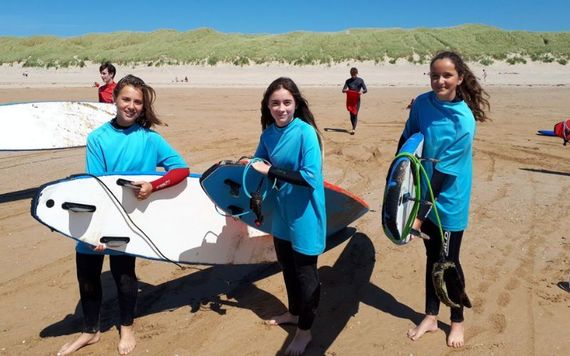
Surf's up! Bundoran, County Donegal.
Riding the waves in low-temperature seas isn’t for the faint-hearted. But for the thrill-seekers who chase the freezing waves around the globe, Northern Ireland’s rugged coastline and beaches like Bundoran and Portrush are regularly listed among the best cold water rip tides in the world. Ireland as a whole has some 3,172km of coastline to offer surf enthusiasts, with the best waves to be found along the North and West Atlantic coasts.
- Wear a coat to a BBQ
Photos of rain-soaked Irish BBQ attempts have long gone viral on social media as warmer climates laugh at our desperate attempts to get in on the al fresco action. However, it’s a testament to the Irish spirit of tenacity and resilience that allowed us to build an empire of global tech business from our medieval warrior days. Attend an Irish BBQ while wearing a coat (or a borrowed blanket) for warmth and possibly even an umbrella for the rain showers, and you’ve experienced outdoor dining the Emerald Isle way.
- Catch a rugby match
Ireland may be small in terms of geography and population, but its a big hitter when it comes to what is actually its fourth official sport - rugby. Played here since the first club at Trinity College Dublin began in 1854. Now in the age of professionalism, each province has its own large team that feed into a national team who, having beaten the All Blacks in a world-first victory last year, now sit fourth in the world tables. Whether you catch a local club of a provincial team game, the roaring atmosphere will hook you in (even if you don’t understand the rules!)
- Mural tour in Belfast
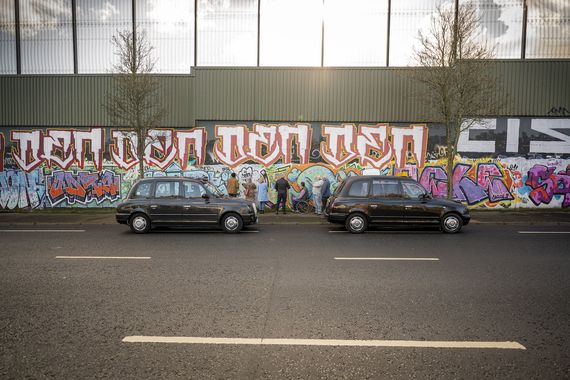
The Peace Wall in Belfast.
Belfast’s rise from Troubles to Tourism is one of the country’s biggest success stories in the last century. The capital city of the North now features high-tech exhibition centers and award-winning tourist destinations, but a firm favorite among travelers remains the humble “Black Taxi Tour.” Named because of the traditional black cabs you travel in, the tours are delivered by people who experienced the Troubles first hand, and their local knowledge takes you safely on the ground into the painted walls of the divided communities who still live side-by-side today.
- Golfing in Sligo
This is an island with hundreds of great golf courses – more per capita than anywhere else on Earth in fact. The rise of home-grown golfing superstars like Rory McIlroy and the arrival of huge tournaments to these shores have done little to quell the growth of golf tourism. While there are many courses to choose from, County Sligo Golf Club (known to many as Rosses Point) is worth a turn, if only to play among the rugged Connacht landscape that inspired playwright W. B. Yeats in his youth.
- Drive the Wild Atlantic Way
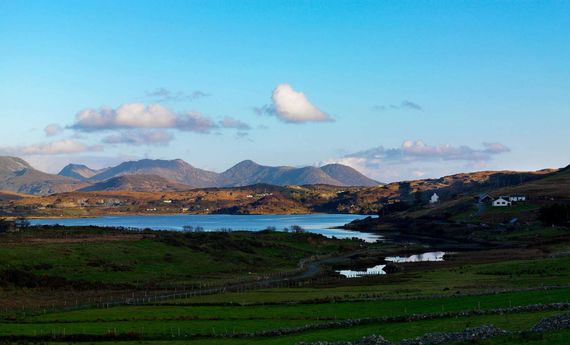
The Sky Road, Clifden, County Galway.
Quite appropriately named, Ireland’s famous road route the “Wild Atlantic Way” features 2,500km of some of the best scenery the island has to offer, from Country Donegal to County Cork. A clear favorite along the way is the Cliffs of Moher in County Clare. Standing atop some 666 feet, you’ll see right out over the Atlantic to the Aran Islands on a clear day.
- Listen to buskers in Galway
Brilliant music from the buskers of Galway CityLove the buzz of GALWAY CITY center? Check out these amazing buskers! Read more about City of Tribes here: http://irsh.us/2iMS0jp
Posted by IrishCentral.com on Monday, February 6, 2017
Ed Sheeran’s Galway Girl has been a hit record worldwide and the video showing a young look-a-like busking on the city’s streets have romanticized what is a long-standing tradition of musicians cutting there teeth on the cobbled pavements. Busking is a big part of the culture and a big reason for the lively atmosphere that tourists come to soak up as they walk the streets.
- Old Bushmills Distillery
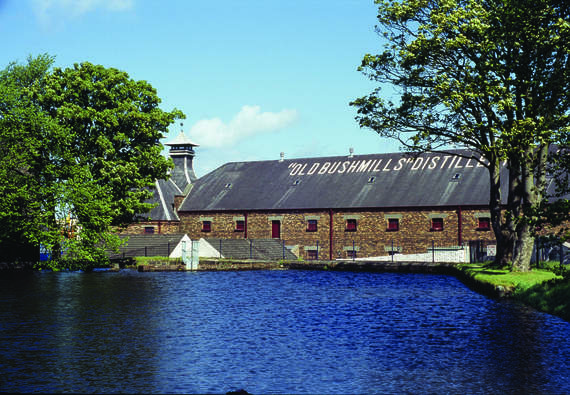
The Old Bushmills Distillery.
The oldest working distillery in Ireland is found on the banks of the river in the small Northern Irish village of Bushmills and you can go behind the scenes to see how its made. For over four centuries, this family have been hand-crafting smooth Irish whiskey that is now synonymous with class - claiming mentions in the famous work Ulysses and on Bank of Ireland banknotes.
- Go whale watching in Cork
The West Coast enjoyed visits from some of Mother Nature’s greats including humpback whales, fin whales, dolphins and even orcas. Experienced tour guides in Cork will take you out on boats to get up close and personal with these majestic creatures. Be mindful of the seasons of migration though, so plan your trip for Minke whales and Harbor porpoise then dolphins in late July, early August followed by larger species like the Humpback during the Autumn months of October through to November.
- Visit Father Ted's house in Co. Clare
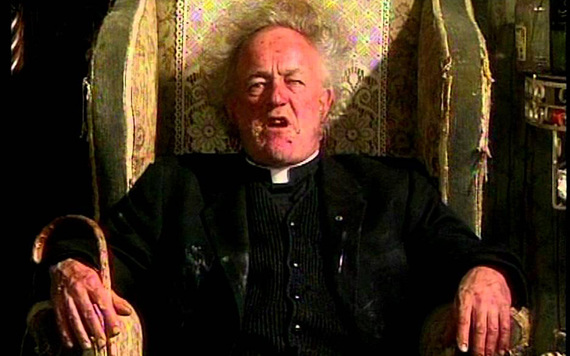
Father Jack from Father Ted.
The passing of two decades has aged us all, and unfortunately taken lead actor Dermot Morgan from us too early, but time hasn’t dimmed the spark felt by so many towards the humble Irish comedy. That is why not only do the tours to see Father Ted’s house - and other filming locations - re-main popular, but up at Inis Mor there is an annual Tedfest festival for super-fans. It’s mad, Ted.
- Try potato bread...and soda bread, and wheaten bread…

Homemade Irish soda bread.
Let’s be honest, the rest of the world really needs to catch up on their bread production. If there’s one thing the Irish got creative with, it was bread. And now we lay claim to some of the greatest inventions known to mankind - including potato farls, soda bread, wheaten bread and more. Early Irish cooks bypassed yeast and used “bread soda” or “baking soda” because Irish flour was too soft to make yeast bread. For sweeter teeth, try the sweet dough of barnbrack with its sultanas and raisins. And don’t forget to try some fillings inside a big white batch loaf with a well-fired crust top.
- Try cheese & onion Tayto Crisps at Tayto Park
Irish confectionery brand Tayto have been credited with inventing the cheese and onion flavor. Spotting a niche in the Irish crisp market which consisted of plain crisps with a bag of salt to add, Joe “Spud” Murphy set up his own crisp factory in Dublin in 1954. The flavor now synonymous with a “taste of home” for Irish diaspora around the world, filling many a care package from home. Tayto Park is Ireland’s only theme park and alongside thrill rides you can go behind the scenes to see how the national snack is produced.
- Eat an Ulster Fry, at any time of day
Similar to an English breakfast (unless you ask an Irish person) the Ulster Fry is a very particular take on the traditional cooked Irish breakfast and is eaten at any time of day, not just breakfast. Consisting of two fried eggs, fried potato bread and soda bread, pork sausages, bacon, black and white pudding and a fried juicy tomato, an Ulster Fry will either set you up for the day ahead, or cure the hangover from the night before.
- Discover the roots of today's Irish Americans

The Ulster American Folk Park in Omagh, in the West of Northern Ireland is a hidden gem of a tourist attraction, off the main trail used to travel North to South. This open-air museum tells the story of three centuries of one Irish family’s story of emigration. You can walk through restored original farmland buildings and watch actors explain how they lived, then board a full-size replica of the “Brig Union” ship to America at the docks, then land in the New World, visiting the 1720s Fulton stone house, which was painstakingly dismantled in Lancaster County, Pennsylvania, and rebuilt at the museum site.
- Trinity College's library
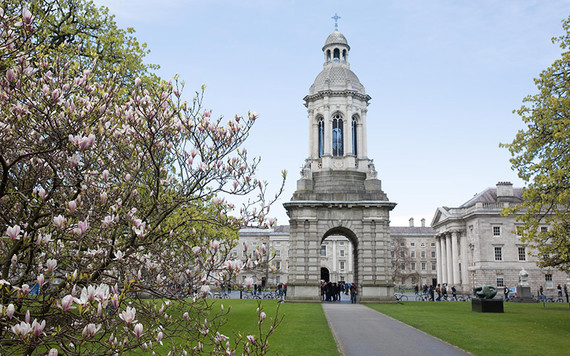
Get inside Trinity College Dublin's Library.
Ireland isn’t just a land of shamrocks and Celtic myths. Boasting four winners of the Nobel Prize for Literature, this is the land of saints and scholars, of poets and storytellers. And there’s no better place to soak it all up than in Trinity College’s stunning library. Of course, it’s home to the famous Book of Kells dating back to around 800 AD.
- Most northern point of Ireland, Malin Head, Co Donegal
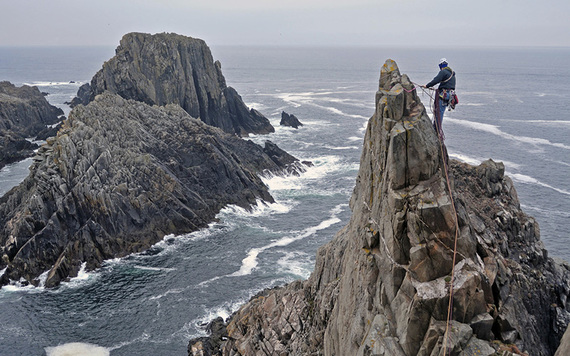
Rockclimbing off Malin Head.
Ireland’s most Northerly point may seem caught in time, still rugged and wild, but it has actually witnessed some of the world’s significant events such as the first telecommunication on the island from Lloyds Signal Tower and then the passing of the German Fleet at the end of the First World War. It’s also steeped in folklore and continues to play a key role in both bird migration and the country’s meteorological forecasts.
- Most southern point of Ireland, Brow Head, Co. Cork
The Southern-most point of the country is as spectacular as the Northern, with views on a clear day as far as Fastnet Rock (13.5km) and Cape Clear to the East. You can still see the old signal tower, built by the British in 1804 to give warnings of a French invasion.
- Set foot on the Aran Islands
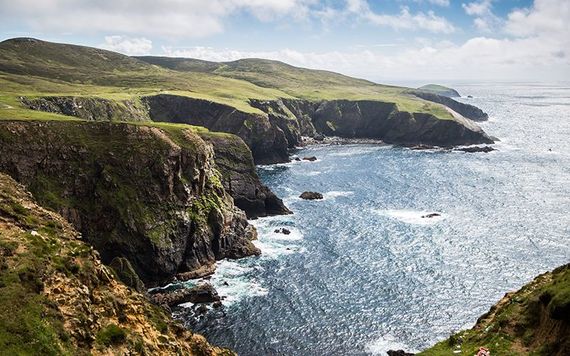
The Aran Islands, Galway.
Famous for its rolling hills and fields separated by 1,500 miles of rustic mortarless walls, the harsh terrain of the Aran Islands also provides one of Ireland’s warmest welcomes. With three islands occupying just 18 square miles of land, the trip by ferry from Galway and Dingle will transport you back to a time when Gaelic was the first language and Ireland felt like the edge of the Earth.
- Have a pint in the oldest bar in the world

Sean's Bar, the oldest in Ireland.
Sean’s Bar is rumored to be the oldest bar in the whole world, not just Ireland’s oldest surviving pub. Nestled on the bank of the River Shannon in Athlone, the historic evidence was found during renovation work in the 1970s, including ancient coins dating back to 900 CE. While the artifacts were moved to the Irish National Museum, a portion of the ancient construction remains and the bar still operates as a traditional Irish pub serving ale with a side of live music.
- Touch the 1916 bullet holes of the General Post Office in Dublin
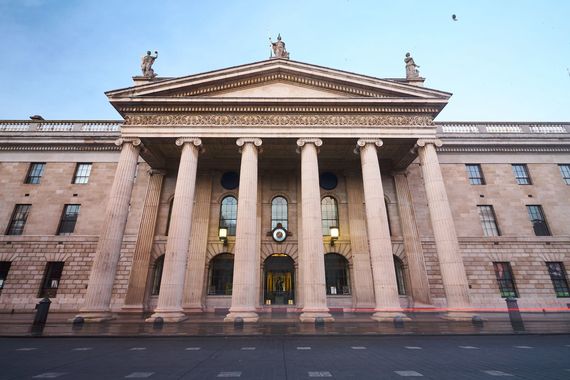
GPO, O'Connell Sreet.
Arguably the defining moment in Ireland’s history, the Easter Rising of 1916 gave way to what is the current independent state. While 2016 saw a raft of centenary commemorations, anyone visiting the capital city can see the remnants of this explosive period for themselves, most poignantly in the bullet holes and masonry chips that remain on the facade of the GPO - which acted as the headquarters of the Irish Volunteers during the rebellion.
- Kiss the Blarney Stone
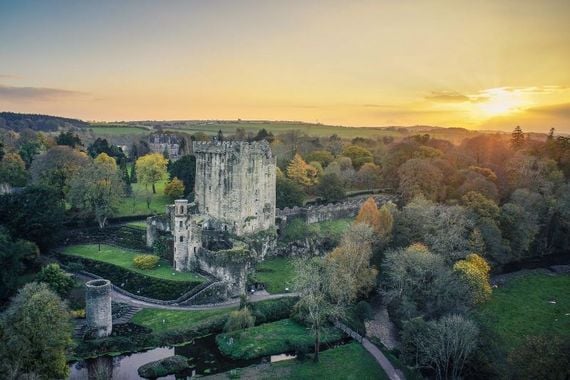
Blarney Castle in Cork.
Ireland isn’t short on stones, but this is by far the most famous. The block of limestone built into the top of Blarney Castle in Cork requires visitors to climb 127 steps up the interior walls of the medieval fortress (and then hang your head upside down) to kiss the stone - a tradition that began in the 1800s when the myth began that it would bestow you with the gift of eloquence, literally “the gift of the gab” with the list of famed kissers including Winston Churchill in 1912.
- Learn to pour the perfect pint of Guinness
No visit to Ireland seems complete without a taste of the “Black Stuff” even for non-stout lovers. Founder Arthur Guinness’ original fermentation plant of 1902 at St. James’ Gate is now one of Dublin’s most visited destinations. The seven-story visitor center tells the story of one of the world’s most famous drinks brands and you’re rewarded at the top with a perfectly-poured pint in the Gravity Bar.
- Eat scones at Kylemore Abbey
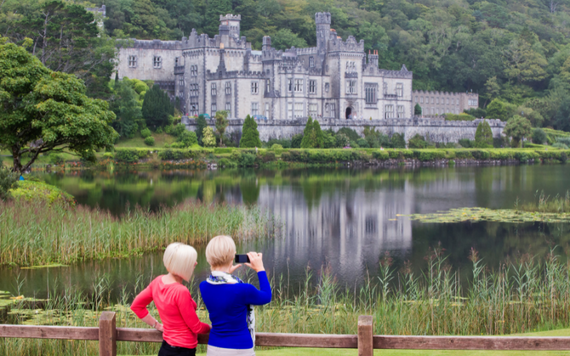
Kylemore Abbey, Connemara, County Galway.
Kylemore Abbey is fairly young by Irish history standards (a mere 150 years old). However this picturesque manor home by the lake in Connemara, County Galway offers one of the most picturesque garden walks and bakery lunches that you’ll find in Ireland. It comes with an intriguing story of its own, moving from private residence to Duke estate to Irish Benedictine Nun residence after they fled Belgium in World War One.
- Walk One Man's Pass
Donegal’s Slieve League Cliffs, among the highest in Europe, have the ability to make you feel like you’re standing on the edge of the world. Reaching the highest point requires navigating a narrow pathway known as One Man’s Pass. With sea birds circling overhead and cliffs sweeping down to the dark Atlantic waves below, you’ll find a renewed sense of awe if you scale it.
- Spend a night in a castle
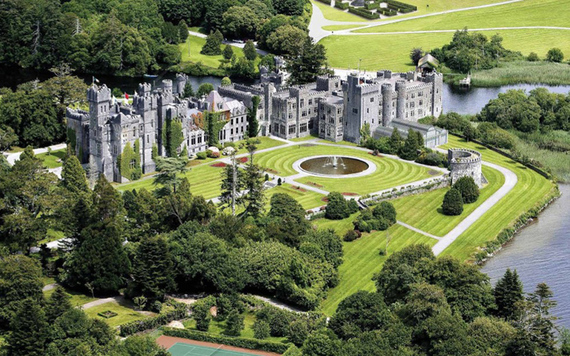
Ashford Castle, Cong: Spend a night at a castle.
One thing Ireland is not short on is castles. However you want to experience these medieval fortresses, you can find the one for you, whether it's the mystical cliff-edge ruins of Dunluce on the North Coast to the stone at Blarney Castle that has visitors literally bending over backward to kiss it. But you’ll take your castle experience to the next level when you actually spend the night in one. A suite in Ashford Castle, County Mayo will bring you five-star service inside 1228 year-old-walls.
- Roll your car up the Magic Road
Magic Road or Magic Hill in County Louth is the place where cars seem to defy everything our science teachers taught us about gravity. Magnetic gravity hills actually exist in numerous continents around the world, but that takes away nothing from the experience of actually rolling uphill. Old folklore told that Irish fairies were responsible for pushing vehicles the wrong way.
- Pretend you can Riverdance to trad music
“Trad” is the colloquial name for traditional Irish music. While whiskey and stout are the souls of the pubs, Trad is surely the heart. Get comfortable in any of the country’s old pubs, complete with open turf fire and stained glass windows, and you’ll probably stumble across an informal session of group music on tin whistles, fiddles and hand-held drums (called bodhráns).
- See something older than the pyramids
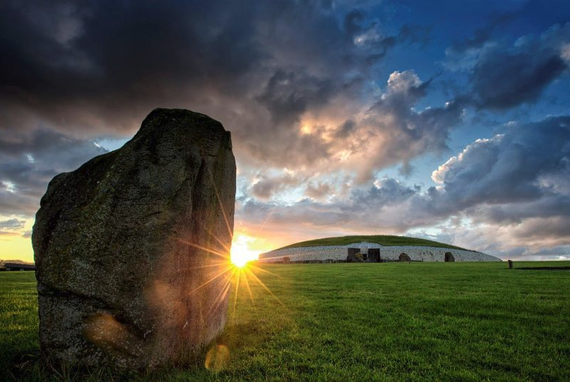
Older than Eygpt's pyramids: Newgrange.
UNESCO World Heritage Site Brú Na Bóinne (Bend of the Boyne) in County Meath predates both the Egyptian pyramids and Stonehenge. While solstice tickets are assigned through a lottery, you can watch a recreation at other times of the year. History lovers will revel in the Stone Age-dated Newgrange tomb (c 3200 BC).
- Visit the Giant’s Causeway
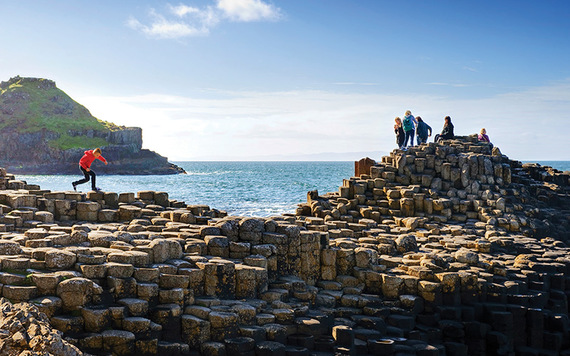
The Giant's Causeway, Antrim.
Travel from Belfast along Antrim’s coastal route and you’ll reach the UNESCO-listed wonder that is the Giant’s Causeway. Geologically fascinating are the 40,000 hexagonal basalt columns formed by cooling lava over 60 million years ago. Equally as fascinating are the Celtic legends of Finn McCool and his rivalry with Scotland’s Benandonner.
- Take a seaweed bath
In Edwardian times, seaweed baths were plentiful and popular. As the population moved out of the west coast, seaweed bath houses started to fade and in the 60’s they all but disappeared. However thanks to the growing spa industry in Ireland, seaweed baths are commonplace in most larger city salons and hotel spas. They look bad, and can smell worse, but many people swear by their effect on conditions such as rheumatism and arthritis.
- See the Northern Lights at Inishowen
The elusive solar phenomenon Aurora Borealis or Northern Lights lures star gazers and photographers worldwide to witness the most amazing sky shows. Although not as guaranteed as more Northern viewing spots like Canada or Greenland, the fact that little old Donegal can give you a laser light show is just one more reason to head North on your travels.
- Go to jail
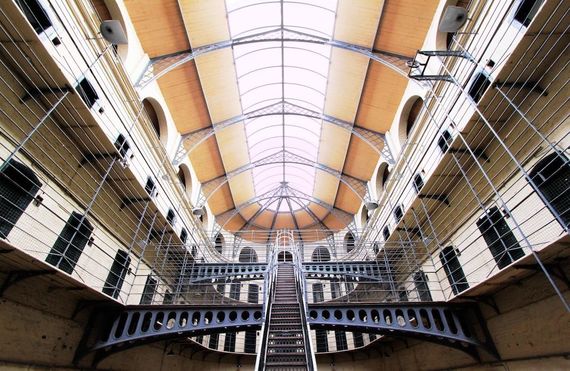
Kilmainham Gaol.
Albeit not your typical travel list item, Ireland’s jails are some of the country’s most visited tourist destinations, because of the deep and historic stories they tell. Kilmainham Gaol is a must-visit for its art gallery as well as the poignant history of the men who led the Easter Rising of 1916 which led to the formation of the Free State.
- Watch a Gaelic game

Home of the Gaelic games, Croke Park.
Two of Ireland’s most traditional sports - hurling and Gaelic football - also happen to be two of the world’s most unique games. Hurling is likened to field hockey but with its nuances and is actually the fastest field game on grass found anywhere in the world. Gaelic football is loosely described as a hybrid of soccer and rugby, with more in-the-air ball play. Live matches of these energetic games are played in the Summer months, with the patriotic County clash finals taking place in September each year.
- Try a (different) Guinness
For fans of the “Black Stuff”, a pint poured in a traditional Irish pub or a visit to Dublin’s Storehouse are always high on the to-do list. But one very cool, but lesser-known way to enjoy the Guinness brand is a visit to Lough Tay Lake in County Wicklow. Nicknamed Guinness Lake, not just because it is on the estate owned by the Guinness family, but because an aerial view will show the dark peaty water against the edge of imported white sand at the top, looking very much like a big pint of stout!
- Sail with Dolphins
Though the water may be too cold to swim with them, dolphins regularly visit the Dingle Peninsula, one of the most picturesque areas of Ireland sitting on its Western point. One dolphin in particular - named Fungi - is a local celebrity. The nearby town has a bohemian Irish village vibe with shops, pubs and restaurants but a sailing trip among the dolphins out to the nearby Blasket Islands will give you a truly unique view of this Western tip of Europe.
- Climb rocks in County Donegal
For rock-climbing enthusiasts, the multi-layered terrain of mudstone and sand at Muckross Head provides some of the best climbs in all of Ireland, with straight vertical routes of two meters and over-hanging crags to really challenge you.
- Eat traditional Irish stew
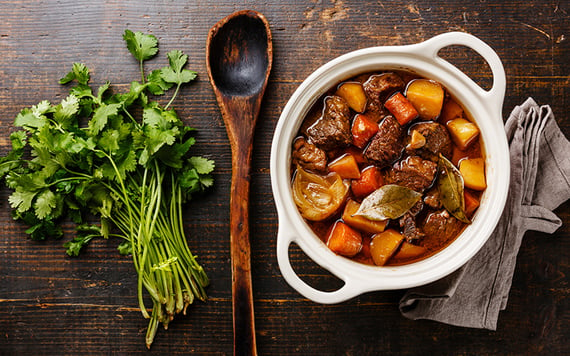
Deliciousl Irish stew.
Irish stew is a watery/gravy-like broth full of flavor made with stewing lamb or beef, potatoes, celery, carrots, and onion. Some may even add potatoes or dip bread into the broth. It is a hearty winter-warmer still cooked up by Irish mammies the breadth of the island. When visiting outside the warmer months of April to August, it should appear on menus from cafes to pub grub and is the fuel you need to set you on your next adventure.
- Re-enact a Viking case battle
Deep in the Kilkenny countryside lies a show cave that has been fascinating archeologists for years. Famed as the scene of a Viking massacre that claimed 1,000 lives, the limestone cave has hidden pieces of gold and silver as well as human remains. Safety infrastructure and a roof over the mouth of the cave now means visitors of the non-geologist persuasion can also enjoy exploring it’s murky past.
- Be a Jedi knight on Skellig Michael

Tourists on Skellig Michael.
Now famous for the final scene in the long-awaited Star Wars Episode VII: The Force Awakens Skellig Michael forms part of the mystical Ring of Kerry tourist trail, a magical place to visit with breathtaking scenery some 200 meters above sea level and perfectly preserved monastery ruins located 12 km off the coast. The island is home to a monastery that dates back to the 6th Century and extraordinary stone beehive-shaped stone huts.
- See the world’s greatest racehorses
Regardless of your personal feelings on the sport, Ireland is known in the horse racing community for breeding some of the world’s greatest racers, and training some of their best riders. Irish National Stud and Gardens is set in an idyllic setting in Kildare, housing a Japanese garden and thoroughbred breeding facility. Enjoy watching the legendary stallions enjoying their retirement alongside the prize-winning foals of the future. You can also visit their horse museum which holds a complete skeleton of Arkle, an infamous Irish racehorse.
- Ring the bells at Shandon
Ireland’s second-largest city of Cork is home to the Church of St. Anne, offering visitors a truly unique experience. Wearing your headphones you can climb the bell tower and use the strings to ring the bells following the sheet music to classics like Mama Mia. If you find you’re not cut out for bell-ringing, you can always stay at the top of the church to enjoy the panoramic views over the city.
- Spend the night in a medieval hut
When you’ve had enough of castles and spa hotels, why not try something totally different and spend the night in the Ringfort located at County Wexford’s Irish National Heritage Park? Here, you’ll get the opportunity to live like our medieval ancestors staying in tented houses, cooking pots of stew over open flamed fires surrounded by high wooden fences.
- Act out Game of Thrones in Laois
Game of Thrones fans have been flocking to Northern Ireland for years to visit some of the now world-famous scenery like the Dark Hedges trees. However, for the real atmosphere of a fortress in the wilderness, get yourself to the Rock of Dunamase in County Laois, dating back to the ninth Century. The then King of Leinster - Diarmuid McMurrough - brought the wife of a rival king hereafter kidnapping her, which then sparked the Anglo-Norman invasion of Ireland.
- See an old magic trick
The “Jumping Wall of Kildemock” is a stone wall church ruin located a mile and a half south of Ardee. The plaque on the site explains that the wall “by its pitch, tilt and position can be seen to have moved three feet from its foundation.” This strange occurrence created a supposedly moving gable wall that sits two feet from where it should. Local myth tells that the church itself moved to avoid holding an excommunicated person who was buried inside the church walls.
- Get trapped in a maze
Near the 800-year-old Dunbrody Abbey Cistercian monastery ruins of Wexford (which are a site worth visiting in themselves) lies the abbey Garden Maze. Made with 1,500 yew trees and gravel paths, the maze is quite high making it one of only two full-sized mazes in the whole country.
- Visit a cemetery
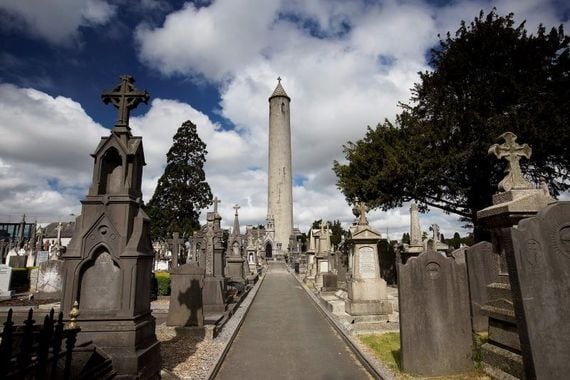
Visit a cemetery: Glasnevin Cemetry, Dublin.
With a country as old as Ireland the heritage and stories of our dead are plentiful in all corners of the island. But one cemetery that stands out is Glasnevin in Dublin. Here you can visit the most famous of graves in Ireland like Daniel O’Connell, while paying homage at the resting place of legends such as Collins and De Valera as well as notable names throughout the World Wars.
- Watch Ireland’s biggest road race
The North West 200 is held annually in May along the North Coast of Ireland. The course is Ireland’s largest public road motorcycle race and one of the fastest in the world with speeds in excess of 200 mph. It has grown in prominence to become the largest annual sporting event in the country, attracting some 150,000 visitors.
- Go on a ghost hunt
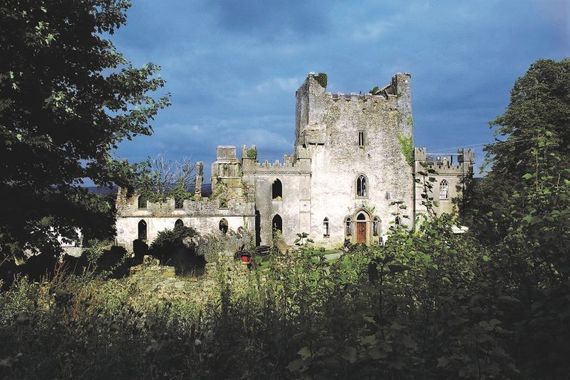
Ghost hunt: Leap Castle is said to be the most haunted place in Ireland.
Leap Castle in County Offaly has been called the most haunted castle in the world. Thousands of visitors travel each year in the hopes of seeing its other-worldly inhabitants. The stories date back to the wife of the owner in 1659 - Mildred Darby - who wrote Gothic novels and held séances in the castle.
- Visit the National Leprechaun Museum in Dublin
Granted, a true tourist would shy away from anything as obvious as the little men with their pots of gold. But this museum actually features all kinds of mythology and folklore-related exhibits. With guided tours, optical illusion tunnels and a wooden replica of the Giant’s Causeway, you’ll have tonnes of fun here. The best part being the unusually large furniture room, which transports you to the size of a leprechaun yourself, should you wish to have a go.
* This article has been featured on behalf of 360protectionchoices.co.uk.
* Originally published in 2017, updated in Nov 2024.
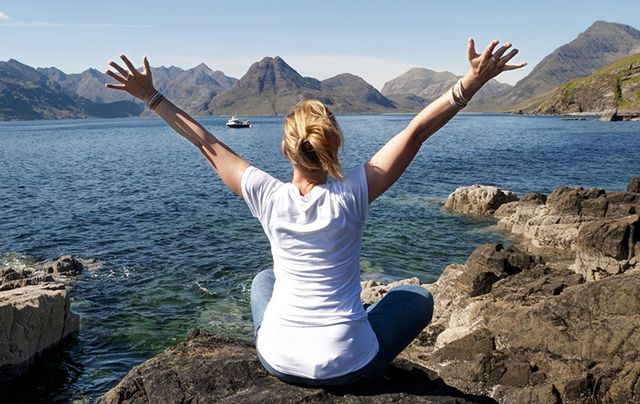
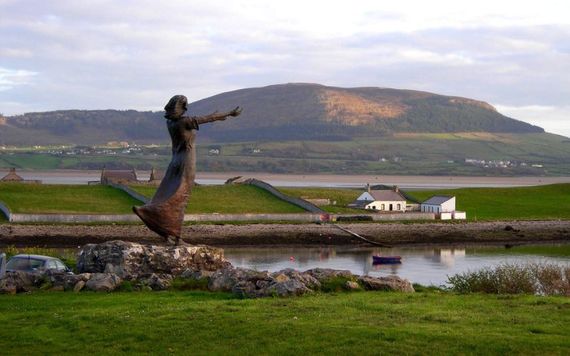
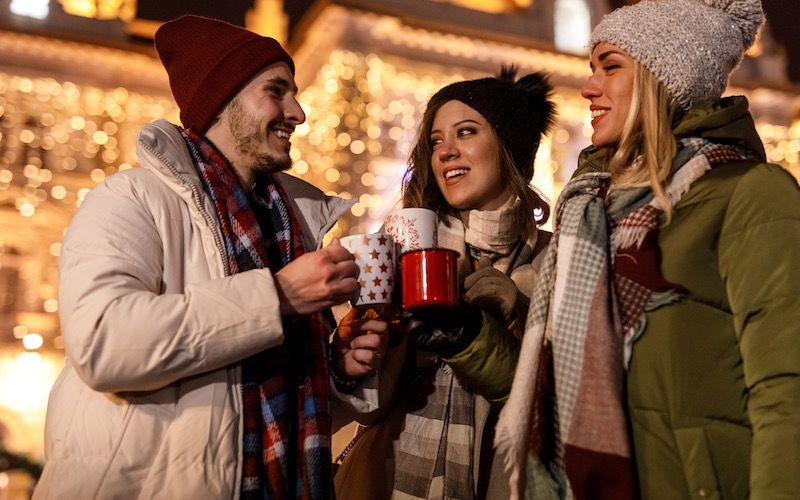
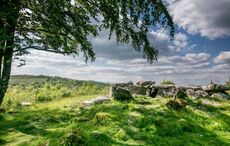

Comments